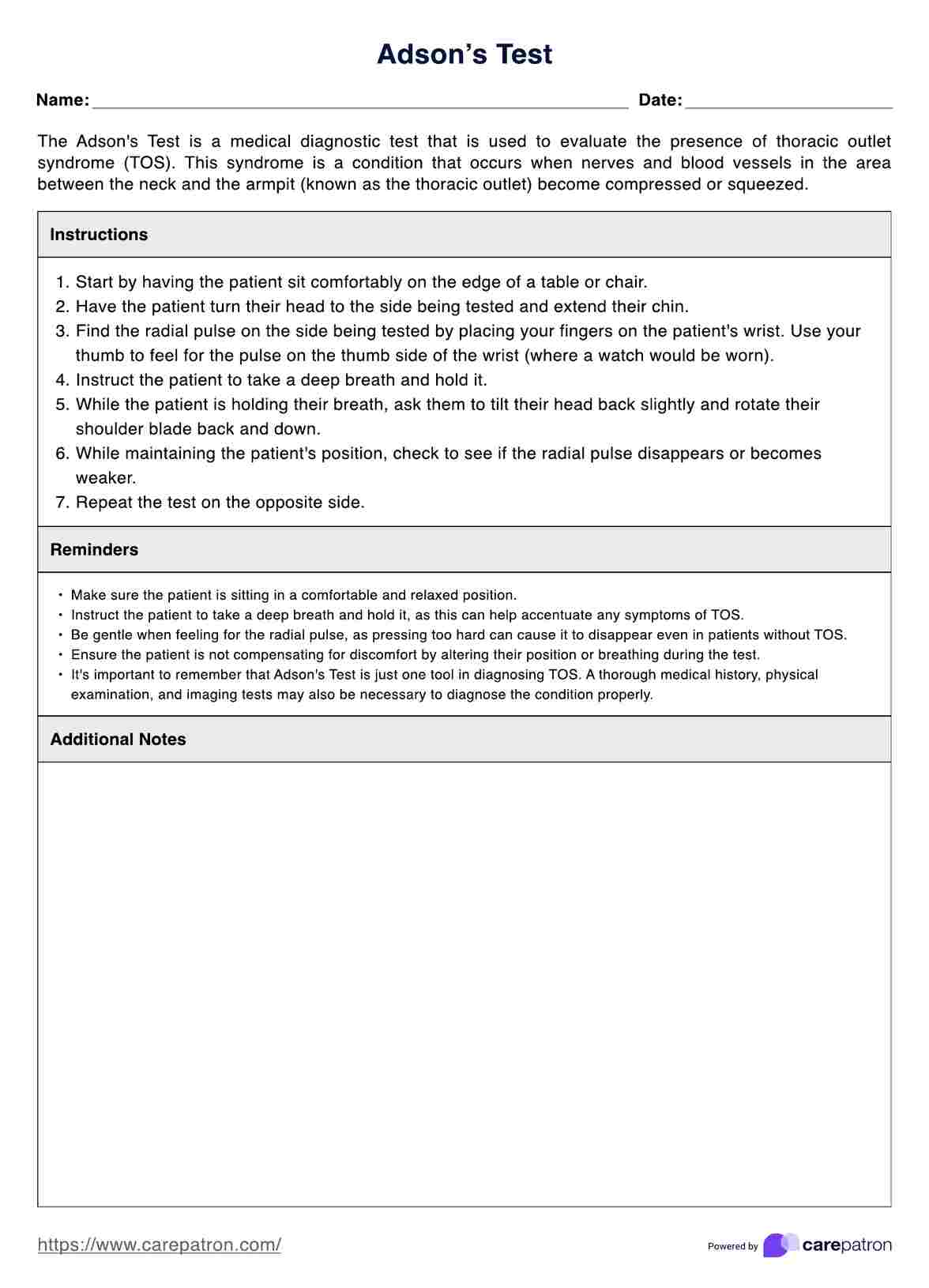To administer this exam, you must engage the patient in several movements and note their responses. Begin by having them sit in a chair, relaxed at their sides, and feet flat on the floor. Then, have them rotate their head toward one shoulder, then the other. Next, have them inhale deeply and hold their breath as they extend their neck away from the side being tested.

Adson’s Test
Learn what the Adson’s Test is and how it can be used to diagnose thoracic outlet syndrome. Download a free PDF guide and example to get started.
Use Template
Adson’s Test Template
Commonly asked questions
This assessment tool doesn't have a scoring system, but you can interpret the results by noting changes in the patient's symptoms during the exam. If there is a decrease in their symptoms, this indicates that TOS may be present.
The Adson's Test is a valuable diagnostic tool that can be used to quickly and accurately assess a patient's condition. It can help confirm or rule out TOS and track the progress of a patient's treatment plan.
EHR and practice management software
Get started for free
*No credit card required
Free
$0/usd
Unlimited clients
Telehealth
1GB of storage
Client portal text
Automated billing and online payments











